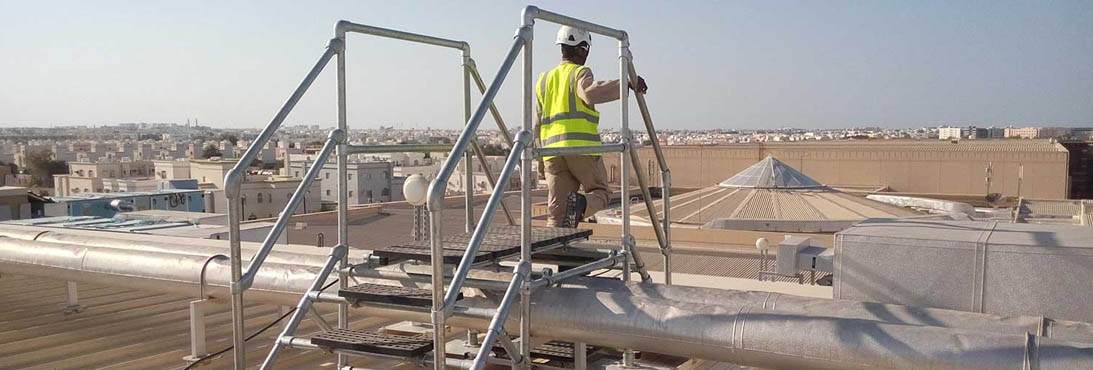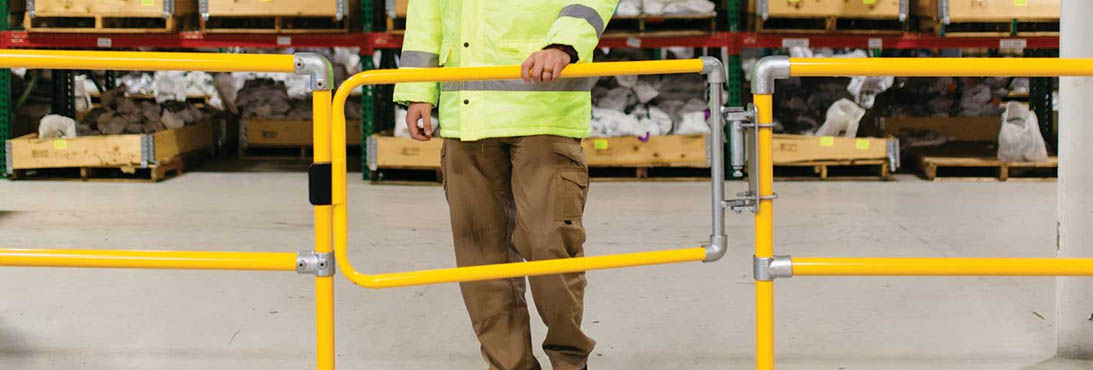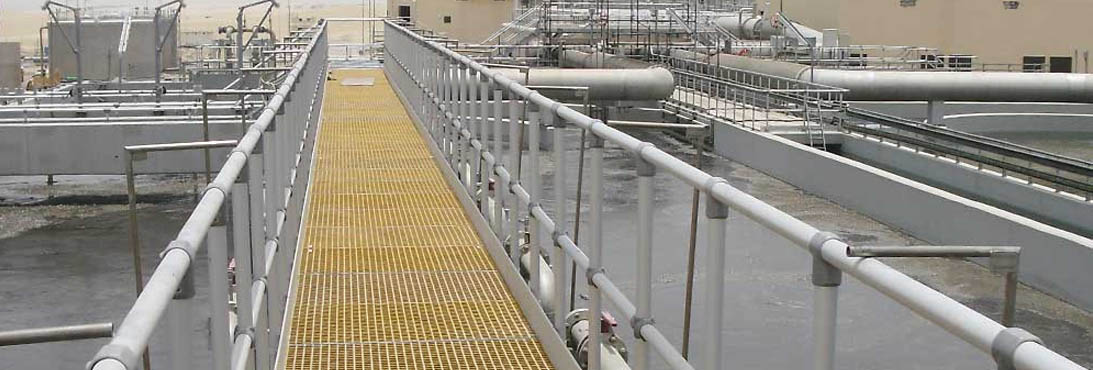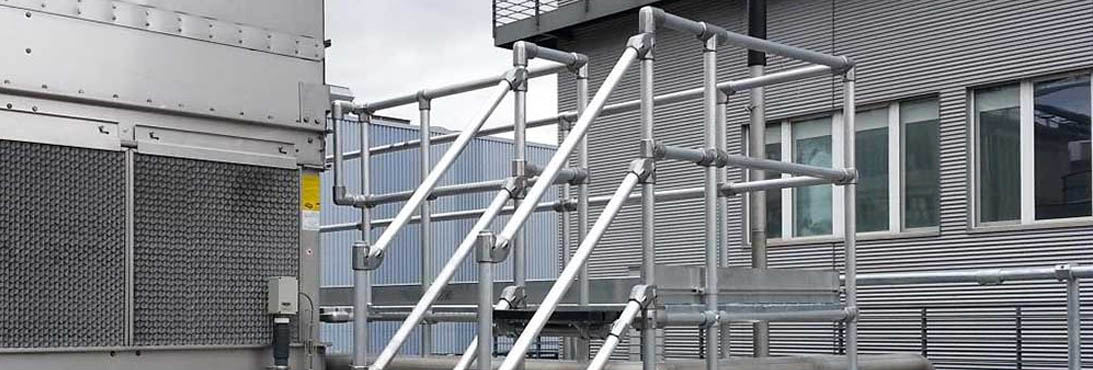Implementing Fall Protection Around Data Center HVAC Systems
Roof fall protection is essential for the safety of engineers and workers in commercial centers. When fixing HVAC systems or outdoor units on rooftops, workers face a risk of slipping and falling from the top. Efficient roof fall protection systems ensure their protection in varying rooftop settings. While typical commercial buildings have simpler requirements for fall protection systems, data centers can be tricky to manage. This read will walk you through different fall protection solutions for HVAC systems in data centers. Let’s get started.
What Is Fall Protection?
Before we explore fall protection solutions for data centers, let’s quickly review the concept of fall protection. Fall protection refers to engineered designs and systems that protect personnel from falling from a rooftop (of a building). These systems are designed according to OSHA requirements and offer thorough protection to workers. There are different types of fall protection systems suitable for varying building structures. A fall protection consultant may help you pick the best option based on your needs.
Fall Protection for Data Center HVAC Systems
Data centers contain large and heavy-duty machines to store huge amounts of valuable data. Engineers set up server machines and computers to run flawlessly to ensure the best utilization of stored data. Even the slightest problem can lead to hours of downtime affecting businesses in a particular locality. While data centers look like other commercial buildings, they are designed based on specific requirements.
If you view a data center from the top, you may find large units of HVAC systems to regulate airflow in the building and maintain optimal temperatures (suitable for computers and heavy-duty machines). Since data centers cannot afford any errors while installing fall protection systems, the process becomes tricky. Only fall protection experts know how to establish an efficient fall protection system without impacting the HVAC rooftop unit.
To help you compare your options, we have added the details of different roof fall protection systems below. You can review the details of each and discuss them with your fall protection consultant to decide on the best option.
Crossover Platforms
Crossover Platforms are ideal for data center rooftops with multiple hazardous obstacles. These platforms have an elevated patch in the center with a staircase on each side. Experts install crossover platforms over HVAC pipes and ducts to avoid physical contact when working on the roof for maintenance.
Crossover Platforms are flexible and can be assembled based on a data center’s requirements. They are suitable for any surface, including corrugated steel rooftops, tar and gravel membrane roofs, and any other surface. They are mostly suitable for rooftop settings with excessive HVAC networks. While it may be a decent choice for your data center’s needs, you may consult an expert for practical advice.
Anti-Slip Walkways
Anti-Slip Walkways work well on slippery membranes and standing seam roof structures. They provide an uninterrupted walkway across a building’s roof to protect workers from slipping and falling. Anti-slip walkways also protect your building’s rooftop due to their engineered design. Moreover, you can combine them with crossover platforms for a more dynamic fall protection system.
Data center roofs have extensive networks of HVAC pipes and ducts. Walking between or over them can be dangerous for workers. By assembling anti-slip walkways around control units, workers can easily access different sections of the HVAC unit and perform maintenance tasks as needed. You can ask your contractor to share walkway assembling solutions to pick the best fit for your building.
Safety Gates
Self-closing safety gates are highly effective for fall protection where protected access is required. These gates use springs to close automatically after a worker passes them. Closing safety gates using a chain or a bar can be dangerous when standing around the borders of a rooftop. The use of springs eliminates the risk and allows safe maintenance operations.
Safety gates are ideal for maintaining HVAC systems in data centers. They provide safe access to pipes without risking the worker’s protection. The maintenance staff can also use gates as support when leaning forward for maintenance checks. Moreover, you can use them in diverse rooftop settings to ensure roof fall protection.
Safety Railings
Safety railings provide fall protection across a rooftop’s perimeter. They are handy for workers working on data center rooftops when carrying out maintenance tasks. Guardrails are ideal for buildings with limited rooftop space. While they can fit into any setting, guardrails can be great for data center roofs where frequent maintenance is needed.
Manufacturers assemble guardrails using slip-on pipes to achieve a sustainable structure. You can get customized guardrails based on your needs. They are cost-efficient and rely on certified components to ensure OSHA compliance. Moreover, you can use them to create closed circuits around sensitive sections of the HVAC systems. Consulting a fall protection expert can help you determine the best fit for your data center.
Custom Platforms
Sometimes, regular fall protection systems do not serve the needs effectively. In such cases, you can opt for customized platforms. Custom fall protection platforms can be mobile, fixed, catwalk, or adjustable. You can state your preferences to a fall protection manufacturer to get a customized set of platforms.
Custom platforms are ideal for data center roofs. Such facilities have complicated HVAC networks that require careful planning when designing fall protection systems. While valid, custom platforms may cost you more based on the coverage area and used materials. You may schedule a roof inspection with one of the experts to get an estimate.
OSHA Requirements for HVAC Systems
Occupational Safety and Health Administration (OSHA) established guidelines for fall protection systems to ensure the safety of personnel working on building rooftops. To determine the best fall protection solution from the above list for data center HVAC systems, you must first understand the HVAC OSHA requirements.
According to OSHA, HVAC workers exposed to six feet or more falls can be covered by §1926.501(b)(1). According to these regulations, HVAC workers may use conventional fall protection systems, including guardrails, safety nets, or fall-arrest systems, to ensure safety.
The Takeaway
The above details highlight the different fall protection systems for data center HVAC units. You can go through the details of each to understand how they differ. If you need thorough guidance on choosing the best fall protection systems, FlexDecks can help you. Contact our experts today to discuss your project.





